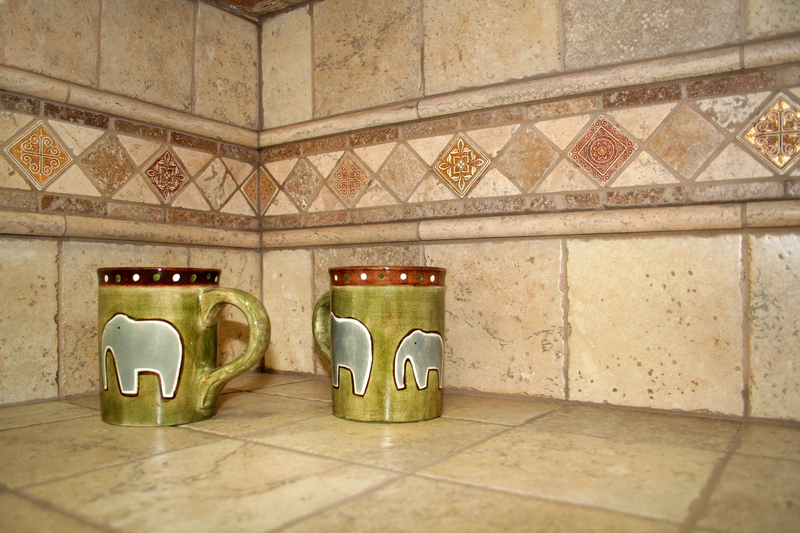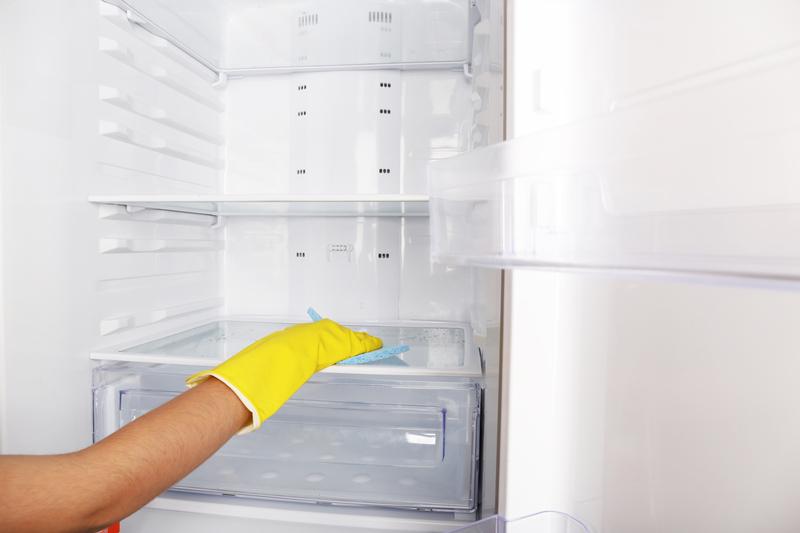Bid Farewell to Grease: Quick Guide for Enamel Oven Trays
Posted on 30/05/2025
Bid Farewell to Grease: Quick Guide for Enamel Oven Trays
Are you tired of constantly battling stubborn grease and baked-on residue on your enamel oven trays? If so, you're not alone! Enamel oven trays are kitchen staples that make baking, roasting, and grilling a real treat, but they can also be a pain to clean. In this comprehensive guide, you'll discover how to effectively clean, maintain, and prolong the life of your enamel oven trays. Let's dive into the science, the solutions, and the step-by-step process for keeping your trays sparkling and grease-free.
Understanding Enamel Oven Trays
Enamel oven trays are widely recognized for their durability, heat resistance, and sleek appearance. Manufactured by bonding powdered glass to a metal base, these trays offer a non-porous surface that resists stains and odors. However, exposure to high temperatures, food acidities, and oils can cause grease buildup and sometimes, unsightly stains. Cleaning them improperly can chip the enamel coating, so understanding the do's and don'ts is critical.
Advantages of Enamel Oven Trays
- Non-stick properties: Enamel surfaces resist most foods from sticking, making them easier to clean if maintained properly.
- Heat resistance: They tolerate high oven temps without warping or damaging the surface.
- Non-reactive: Unlike some metals, enamel doesn't react with acidic foods like tomatoes or citrus.
- Odor and stain resistant: The glass coating keeps strong food smells and deep stains at bay, provided you act fast on spills and grease.

Why Grease Buildup is a Problem
While enamel oven trays are designed for resilience, accumulated grease can be problematic. Over time, stubborn residues not only tarnish the tray's appearance but also:
- Cause uneven cooking: Burning residue may affect heat distribution.
- Harbor bacteria: Build-up creates a breeding ground for germs.
- Release smoky odors: Old grease can produce unpleasant smells the next time you bake.
- Wear down the enamel: Aggressive scrubbing may chip the surface while removing baked grease.
To protect your investment and keep your cookware safe, it's crucial to remove grease from enamel oven trays effectively.
Basic Cleaning vs. Deep Cleaning
There are two main approaches to keeping your enamel baking trays grease-free:
- Routine cleaning: After every use, removing light grease and food debris prevents build-up and stains.
- Deep cleaning: For stubborn, baked-on grease or sticky residues that basic washing can't remove, periodic intensive cleaning is essential.
When Should You Deep Clean?
You should plan to perform a deep clean when:
- The tray looks dull or feels greasy after regular washing
- There are brown, black, or yellowish stains you can't remove with dish soap
- You notice a burnt smell even when the oven is empty
- Food sticks even when you use parchment or oil
How to Clean Enamel Oven Trays: Step-By-Step Guide
Say goodbye to stuck-on grease and stubborn buildup! Here's our step-by-step cleaning guide for enamel oven trays that will restore your trays to their former shine:
1. Let the Tray Cool Completely
- Safety first: Before handling, always let the tray return to room temperature to avoid burns or damage.
2. Rinse Off Loose Debris
- Quick rinse: Use warm water to loosen stuck-on crumbs or small pieces of food.
- Avoid metal tools: Never scrape enamel trays with steel wool or sharp implements that can scratch or chip the coating.
3. Soak the Tray
- Fill your sink: Add very hot water and a generous squirt of dishwashing liquid.
- Soak for 15-30 minutes: This helps soften stubborn grease, making it easier to remove.
- For tough jobs: Add a small amount of baking soda or white vinegar to boost cleaning power.
4. Scrub Gently
- Use a soft sponge or nylon brush: Wipe in circles to lift grease. Avoid abrasive pads.
- Check nooks and crannies: Food often hides in tray corners and raised edges.
5. Employ Home Remedies for Stubborn Grease
- Baking Soda Paste: Make a thick paste of baking soda and water, spread over greasy spots, then leave for 30 minutes before gently scrubbing off.
- Vinegar Spray: Fill a spray bottle with white vinegar, mist onto stubborn grease, and leave for 10 minutes before wiping away.
- Lemon Juice: The acidity of lemon juice can help dissolve burnt grease and leaves a fresh scent.
6. Rinse Thoroughly
- Remove residue: Wash away all cleaning agents--baking soda, soap, or vinegar--to avoid food contamination.
7. Dry Properly
- Pat dry: Use a clean towel to match the oven tray's full surface.
- Air dry: If possible, let the tray air dry before storing to prevent water spots or rusting on uncoated parts.
Essential Tips for Maintaining Enamel Oven Trays
Regular care will keep your enamel oven trays grease-free and looking brand new for much longer:
- Use parchment paper or silicone baking mats: These prevent direct food contact and minimize sticking and grease buildup.
- Clean immediately after use: The longer grease sits, the harder it becomes to remove.
- Store properly: Avoid stacking heavy pots on enamel trays to prevent chips.
- Avoid rapid temperature changes: Don't put cold water on a hot tray; this can lead to cracking or chipping.
- Skip harsh chemicals: Avoid cleaners with bleach or ammonia, which can damage the enamel over time.
Common Mistakes to Avoid
- Never use steel wool or metal scouring pads: These can scratch the enamel surface, leaving it vulnerable to future stains.
- Don't soak for days: Extended soaking may lead to rust on exposed edges or underside if the enamel wears thin.
- Don't use oven cleaners: Many commercial cleaners are harsh and can damage enamel coatings.
- Never use a knife or metal spatula: Scraping off burnt residue can create tiny chips where grease accumulates faster.
Natural Cleaning Methods for Enamel Baking Trays
If you're seeking eco-friendly or allergy-safe solutions, these natural cleaners work wonders on enamel oven tray grease and residue:
- Baking Soda: Acts as a gentle abrasive, safe for enamel, breaking down even baked-on oils.
- White Vinegar: Dissolves light mineral deposits and softens tough grime.
- Lemon: Combines natural acidity and a pleasant scent for medium-stubborn stains.
- Salt: For extra scrubbing strength, especially combined with lemon juice.
How to Make a Natural Oven Tray Cleaner
- Mix 1/4 cup baking soda, 2 tablespoons water, and 2 tablespoons white vinegar in a bowl to make a paste.
- Spread the paste over grease spots and allow to sit for at least 20 minutes.
- Scrub gently with a non-abrasive sponge, rinse thoroughly, and dry.
Frequently Asked Questions
Can I put enamel oven trays in the dishwasher?
Most enamel oven trays are dishwasher safe, but repeated dishwasher cycles may dull the enamel's shine over time. When in doubt, check the manufacturer's instructions.
How do I remove severe burn marks from an enamel oven tray?
For stubborn burns, sprinkle baking soda directly over wet marks, then add a layer of vinegar. Let it fizz, sit for an hour, then scrub gently. Avoid excessive force or tools that could chip the enamel.
How can I prevent grease buildup in the future?
- Line trays with parchment paper or silicone mats before cooking greasy foods.
- Wipe excess oils from food before baking.
- Regularly clean your trays after each use to prevent cumulative buildup.
Is it safe to use oven cleaner on enamel trays?
Most commercial oven cleaners are too harsh for enamel surfaces, potentially causing damage. Stick to dishwashing liquid, baking soda, and vinegar-based solutions.

Summary: Your Key Takeaways
- Enamel oven trays are easy to care for but require gentle cleaning to avoid chips and stains.
- Swiftly attending to spills and grease prevents stubborn buildup.
- Homemade solutions like baking soda and vinegar are safe and effective for deep cleaning.
- Regular maintenance can prolong the life of your trays and keep your food tasting its best.
Don't let stubborn grease ruin your culinary confidence or your beautiful enamel bakeware. By following this quick but in-depth guide, you'll be able to bid farewell to grease and enjoy sparkling clean enamel oven trays every time!
Further Reading & Resources
- How to Clean Your Oven Naturally: Good Housekeeping Cleaning Guide
- Best Practices for Oven Tray Maintenance: Better Homes & Gardens
- Choosing the Right Bakeware for Your Oven: Bon Appetit
Armed with this knowledge, you can ensure your enamel oven trays will serve you deliciously for years to come!




